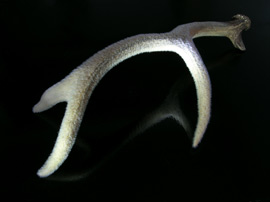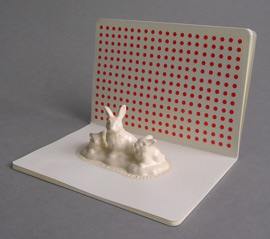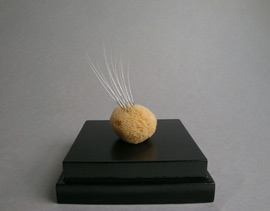Project 7 GOW at GNM
July 19th- 19th August 2011
Andrea Roe
Eye-tracker
The Gallery of Wonder at the Great North Museum: Hancock is the Large Hadron Collider of the museum world, pushing very different objects, very close together. It brings to mind two things I’ve been interested in for a long time: conversations and museums. In an ideal world, a conversation is a connected series of utterances, an everyday human activity where each move is related in a coherent way to its neighbour. And in the same ideal world, a museum is a connected series of objects, a carefully-designed human institution where each collected item is related in a coherent way to its neighbour. But of course, in practice it’s not so simple.
In the case of conversations, the philosopher of language H. Paul Grice argued that as speakers in co-operative conversations, we tend to follow (and sometimes play with) various principles: be truthful, be informative, be brief, be orderly, avoid obscurity, avoid ambiguity–and always, be relevant. So hearers can assume that speakers are doing these good things: and when I hear someone mention two ideas in the same breath, I therefore tend to assume that those ideas are somehow connected.
You can think of museums in these Gricean terms, and so you might fault a museum display of objects because it’s misleading, or uninformative, or too big, or disorderly, or maybe just plain obscure. But we tend to assume that curators have been co-operative: if two objects are in the same case, we assume that they are somehow connected. And as visitors and viewers, if the connection isn’t obvious, we are prepared to do a bit of work. The hard part for a curator is working out how much work is invigorating, and how much is infuriating. If the curator gets it wrong, the viewer can just walk away.
Thinking about conversations and museums has led to several years of work with colleagues in Edinburgh on “intelligent labels”. We thought that, if a museum object knows who’s looking at it, it might be able to give a better account of itself. And if the museum objects are gossiping among themselves, telling each other which objects have been looked at by whom, then any given object can explain how it is connected to other ones the viewer has already visited: what it has in common with them, how it is unique.
We have built a series of artificially intelligent systems, to explore the idea of intelligent labels. But the Gallery of Wonder is a challenge for us. Intelligent labels help the visitor by tracking them through the space, pointing out the connections between objects. But in this Gallery, there isn’t much space to traverse. So we’d need to use different techniques, like eye-tracking, to tell which objects are attracting the visitor’s attention. But worse than that: this Gallery is about Wonder, about open-endedness; it’s suggestive without being explicit. Too much information would be a disaster: the art of this Gallery is knowing when to shut up.
Jon Oberlander
Biographies
Jon Oberlander is Professor of Epistemics at the University of Edinburgh. He was founder-Director of the Scottish Informatics and Computer Science Alliance, and leads Edinburgh's Inspace project, a living lab exploring the cultural significance of informatics and new media. His research programme in cognition and interaction studies both human-human and human-computer communication. A long-standing concern has been the development of personalization technologies for use in museums and beyond.
Andrea Roe is a lecturer in Sculpture at Edinburgh College of Art. Her work explores animal behaviour research and communication and is informed by collaborations and interdisciplinary residencies ranging from the Wellcome Trust to the Crichton Psychiatric Hospital and more recently the National Museums of Scotland.
Andrea co-organises a Salon series of art-science conversations with Dr Sara Barnes and Lucy Powell which hosts artists, scientists, writers and curators in various venues in Berlin and the U.K
www.andrea-roe.com
Mechanical bird prototype: Darren Cox, National Museums of Scotland





